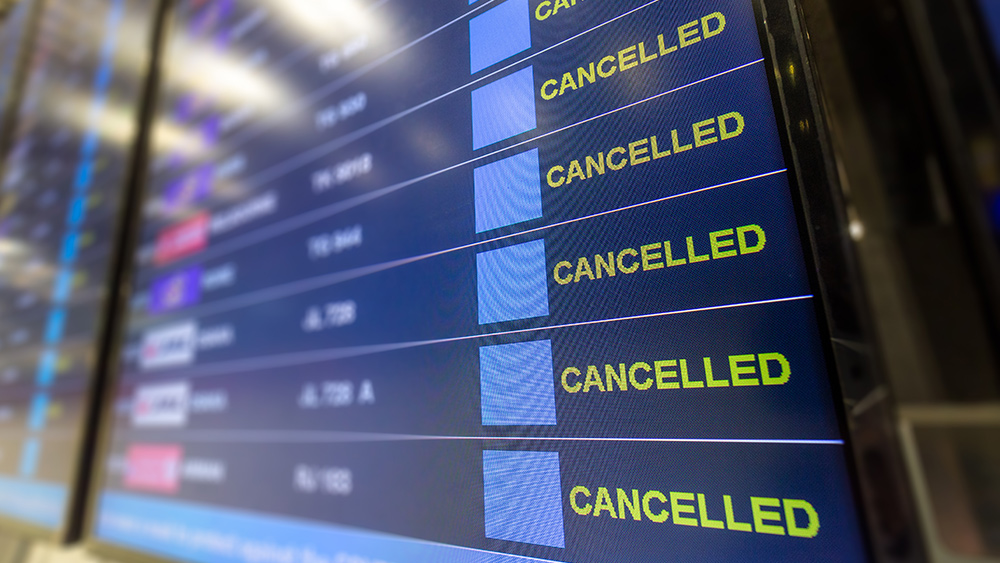Americans’ credit card debt reaches a record-setting $1 trillion in the face of inflation and rising expenses
08/11/2023 / By Cassie B.

The New York Federal Reserve has reported that aggregate credit card balances climbed during the second quarter of this year and exceeded $1 trillion for the first time on record as Americans are increasingly relying on credit cards to cover their expenses.
In the period from April through June, total credit card and indebtedness climbed by $45 billion in an increase of 4 percent. Meanwhile, total household debt increased by 16 billion to reach $17.06 trillion, which set another record.
Some financial experts are blaming the end of pandemic-related debt relief measures for the current situation as credit card delinquencies are also rising, which tends to indicate that consumers are struggling with the combination of higher prices and reduced savings balances.
The Fed also reported that credit card debt that is 30 or more days late reached 7.2 percent during the second quarter, which is its highest rate on record since Q1 of 2012.
According to Fed researchers, climbing balances are a sign of higher levels of consumption as well as inflationary pressure. For example, when adjusted for inflation and taxes, household income is currently 9.1 percent lower than it was in April 2020.
SMBC Nikko Senior U.S, Economist Troy Ludtka said: “This is an issue because the sustainability of consumers’ pandemic debt-binge was partially predicated upon their incomes steadily rising.”
“Instead, the opposite occurred, and now the rate at which borrowers are running late on their debt payments is back to pre-Covid levels. This could be the newest challenge facing embattled commercial banks,” he explained.
Several other types of debt have also been rising but not to the same degree as credit card debt. For example, vehicle loans rose by $20 billion to $1.58 trillion, while newly originated mortgages climbed to $393 billion.
Survey finds Americans are struggling to pay down credit card debt
A recent survey on credit card debt funds carried out by Bankrate provides additional insight into Americans’ credit card debt. They found that the percentage of cardholders who are carrying debt from month to month has climbed to 47 percent overall.
When broken down by age, they found that 53 percent of Generation Xers are carrying over their card balances, followed by Generation Z consumers at 52 percent, Millennials at 49 percent and Baby Boomers at 41 percent. Not surprisingly, lower-income households are more likely to carry credit card debt balances than those earning a higher income.
Consumers identified emergency expenses as driving much of their debt, with expenses such as medical bills, car repairs and home repairs all being cited. However, 25 percent of individuals reported taking on credit card debt in order to cover some of their everyday expenses.
In addition, many are struggling to pay down their debt given the high interest rates being seen right now. In fact, average credit card interest rates are now above 20 percent, which means that those who do carry their balance from month to month are facing an upward battle when it comes to paying down their debt.
Unfortunately, 60 percent of those surveyed who are in credit card debt say they have been in this situation for a year or longer; this is up from the 50 percent recorded in September of 2021.
In addition, more people have been tapping into their 401k retirement accounts to make ends meet, with the number of individuals requesting a hardship withdrawal climbing 36 percent last quarter over the same quarter in 2022.
LendingTree Chief Credit Analyst Matt Schulz believes the situation is only going to get worse, telling CNN: “Unfortunately, it’s only going to go up from here. What’s driving it is inflation, higher interest rates and just generally how expensive life is in 2023.”
Sources for this article include:
Submit a correction >>
Tagged Under:
Bubble, chaos, Collapse, credit card debt, credit cards, debt bomb, debt collapse, economic riot, finance riot, Inflation, market crash, money supply, national debt, panic, pensions, risk
This article may contain statements that reflect the opinion of the author
RECENT NEWS & ARTICLES
COPYRIGHT © 2017 CHAOS NEWS




















